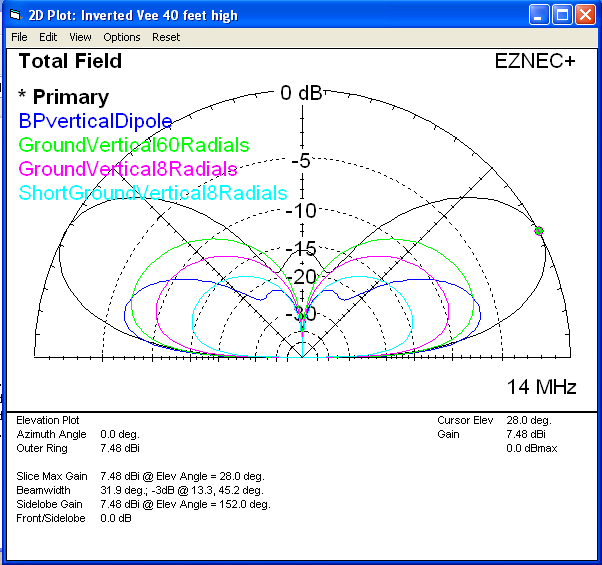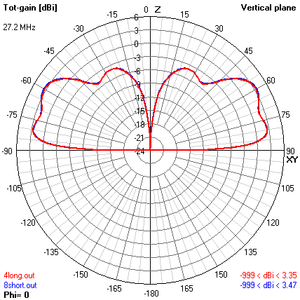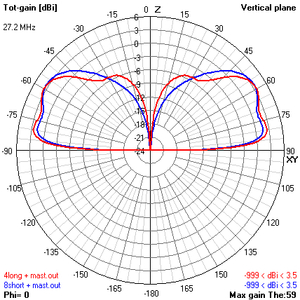So, for all the folks that don't have the ARRL Handbook, here is a link to the study in the ARRL on Radials and Grounding, that I think maybe Connor M0GVZ was referencing in regards to this Sirio 827 radial discussion.
Report in the ARRL was published by John Stanley K4ERO and others who did their own studies. Click on link below.
https://www.kn5l.net/GroundRadialStudy/
NOTE: The Eznec model below is for an Horizontal Inverted V antenna. The title is at the very top of the box shown below. This model is presented at the bottom of this report.
It shows a Horizontal Inverted V antenna pattern at 40' feet high and is noted in black as (PRIMARY). This modeling overlay is comparing a Horizontal Inverted V to several ground mounted Vertical antenna patterns that are mounted on the ground at 14 MHz, just to be clear.
Don't be confused by the nice gain shown for the Inverted V...this is a Horizontal antenna pattern at 40' feet in the air.

Sorry if the image did not post. Check the PDF file below.
Report in the ARRL was published by John Stanley K4ERO and others who did their own studies. Click on link below.
https://www.kn5l.net/GroundRadialStudy/
NOTE: The Eznec model below is for an Horizontal Inverted V antenna. The title is at the very top of the box shown below. This model is presented at the bottom of this report.
It shows a Horizontal Inverted V antenna pattern at 40' feet high and is noted in black as (PRIMARY). This modeling overlay is comparing a Horizontal Inverted V to several ground mounted Vertical antenna patterns that are mounted on the ground at 14 MHz, just to be clear.
Don't be confused by the nice gain shown for the Inverted V...this is a Horizontal antenna pattern at 40' feet in the air.

Sorry if the image did not post. Check the PDF file below.
Attachments
Last edited:











